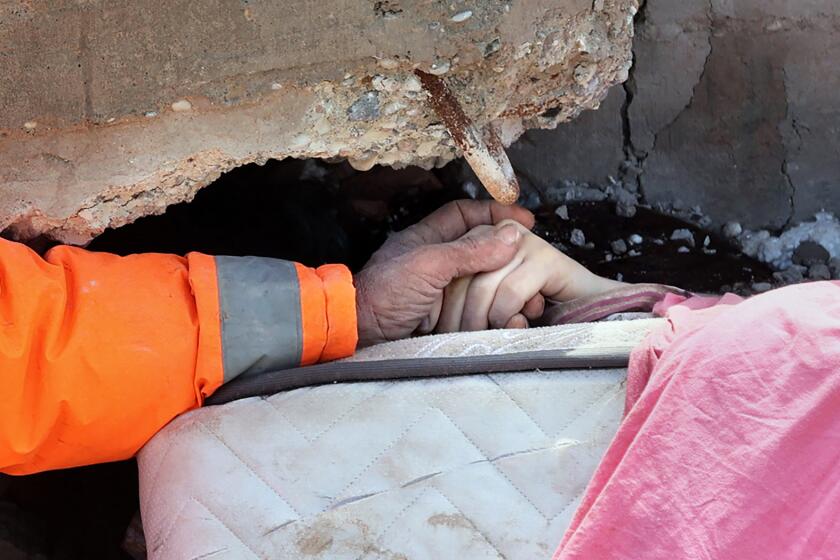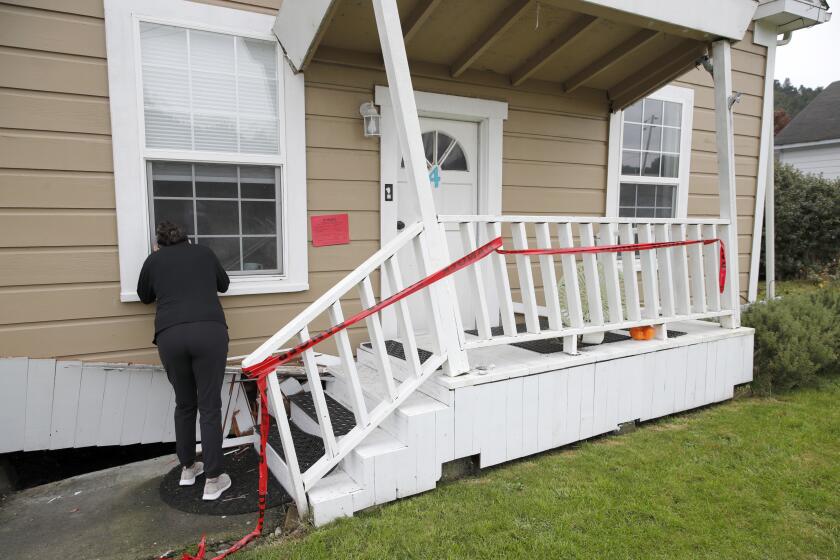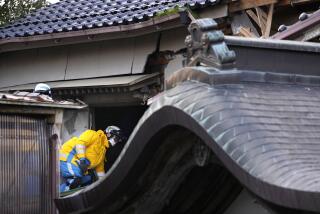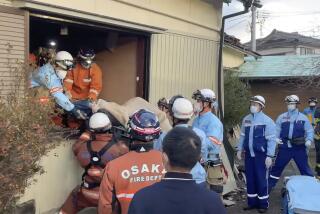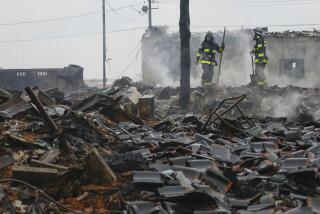Rescuers scramble in Turkey and Syria after deadly magnitude 7.8 earthquake
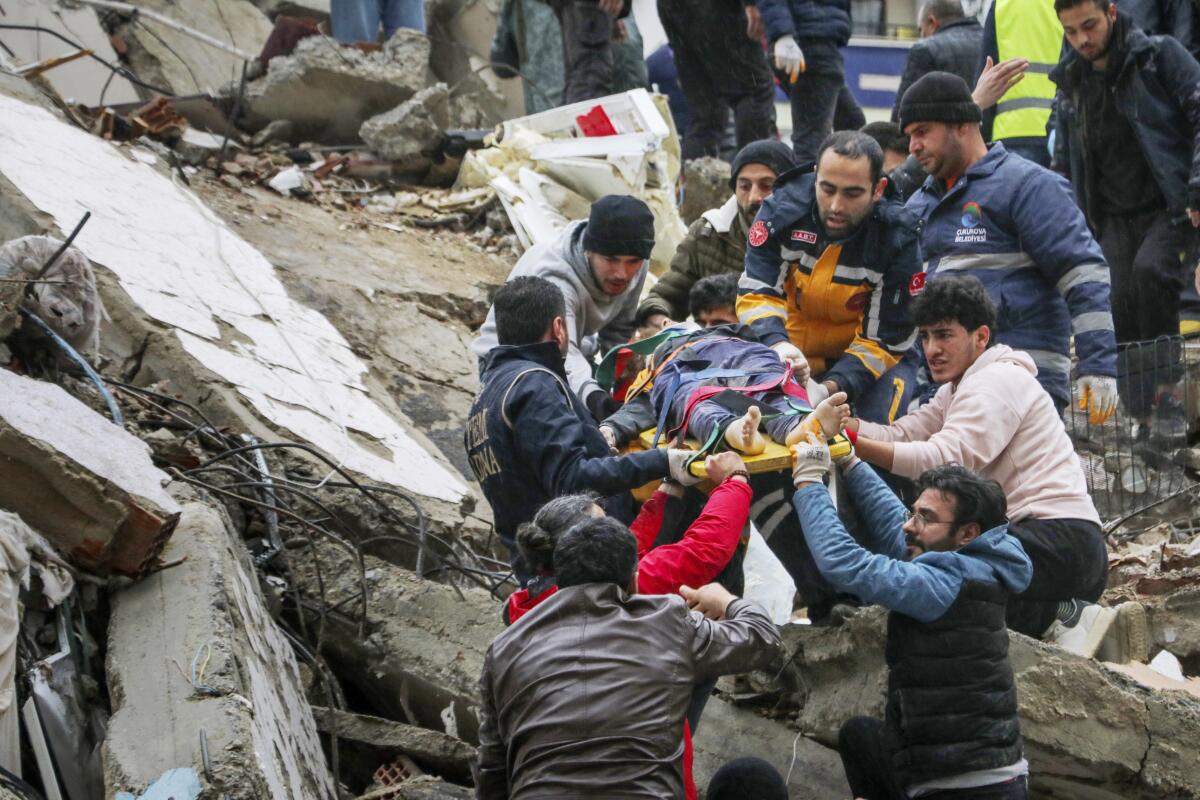
ADANA, Turkey — The death toll from a magnitude 7.8 earthquake and multiple aftershocks that struck Turkey and Syria rose to more than 5,000 on Tuesday as more bodies were pulled from the rubble of collapsed buildings.
Turkish Vice President Fuat Oktay said the total number of deaths in Turkey had risen to 3,419, with another 20,534 people injured. On the Syrian side of the border, 1,602 people have been confirmed dead .
Authorities fear the death toll from Monday’s predawn earthquake and aftershocks would keep climbing as rescuers looked for survivors among tangles of metal and concrete spread across the region beset by Syria’s 12-year civil war and refugee crisis.
Survivors cried out for help from within mountains of debris as first responders contended with rain and snow. Seismic activity continued to rattle the region, including another jolt nearly as powerful as the initial quake. Workers carefully pulled away slabs of concrete and reached for bodies as desperate families waited for news of loved ones.
“My grandson is 1½ years old. Please help them, please. ... They were on the 12th floor,” Imran Bahur said by her destroyed apartment building Monday in the Turkish city of Adana.
The death toll is in the thousands after a magnitude 7.8 earthquake, followed by a magnitude 7.5 quake, struck southern Turkey.
Tens of thousands who were left homeless in Turkey and Syria faced a night in the cold. In the Turkish city of Gaziantep, a provincial capital about 20 miles from the epicenter, people took refuge in shopping malls, stadiums, mosques and community centers. Turkish President Recep Tayyip Erdogan declared seven days of national mourning.
President Biden called Erdogan to express condolences and offer assistance to the NATO ally. The White House said it was sending search-and-rescue teams to support Turkey’s efforts.
The quake, which was centered in Turkey’s southeastern province of Kahramanmaras, sent residents of Damascus and Beirut rushing into the street and was felt as far away as Cairo.
It piled more misery on a region that has seen tremendous suffering over the past decade. On the Syrian side, the area is divided between government-controlled territory and the country’s last opposition-held enclave, which is surrounded by Russian-backed government forces. Turkey, meanwhile, is home to millions of refugees from the civil war.
In the rebel-held enclave, hundreds of families remained trapped in rubble, the opposition emergency organization known as the White Helmets said in a statement. The area is packed with some 4 million people displaced from other parts of the country by the war. Many live in buildings that are already wrecked from military bombardments.
Strained medical centers quickly filled with injured people, rescue workers said. Some facilities had to be emptied, including a maternity hospital, according to the SAMS medical organization.
More than 7,800 people were rescued across 10 provinces, according to Orhan Tatar, an official with Turkey’s disaster management authority.
The region sits on top of major fault lines and is frequently shaken by earthquakes. Some 18,000 were killed in similarly powerful earthquakes that hit northwest Turkey in 1999.
The U.S. Geological Survey measured Monday’s quake at 7.8, with a depth of 11 miles. Hours later, a 7.5 magnitude temblor, likely triggered by the first, struck more than 160 miles away.
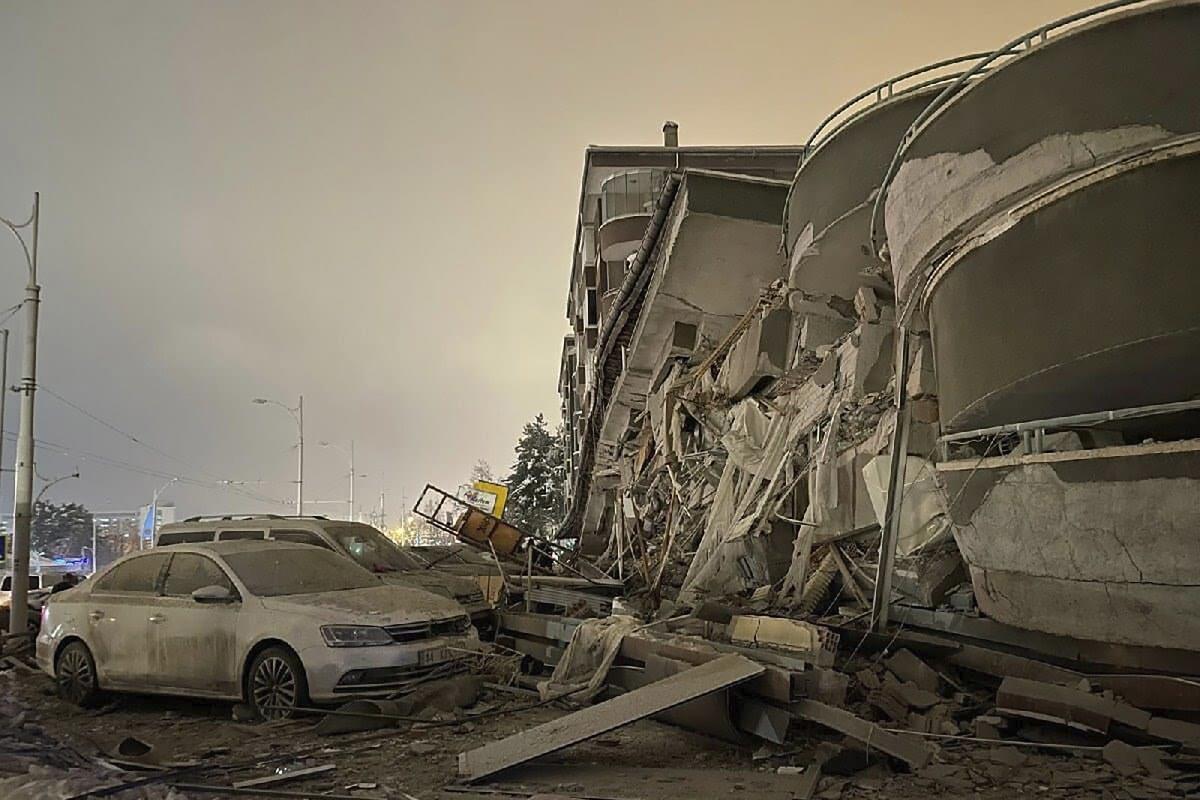
The second jolt caused a multistory apartment building in the Turkish city of Sanliurfa to topple onto the street in a cloud of dust as bystanders screamed, according to video of the scene.
Thousands of buildings were reported collapsed in a wide area extending from Syria’s cities of Aleppo and Hama to Turkey’s Diyarbakir, more than 200 miles to the northeast.
In Turkey alone, more than 5,600 buildings were destroyed, authorities said. Hospitals were damaged, and one collapsed in the city of Iskenderun.
Bitterly cold temperatures could reduce the time frame that rescuers have to save trapped survivors, said Dr. Steven Godby, an expert in natural hazards at Nottingham Trent University. The difficulty of working in areas beset by civil war would further complicate rescue efforts, he said.
Offers of help — from search-and-rescue teams to medical supplies and money — poured in from dozens of countries, as well as the European Union and NATO. The vast majority were for Turkey, with a Russian and even an Israeli promise of help to the Syrian government, but it was not clear if any would go to the devastated rebel-held pocket in the northwest.
The guide to earthquake readiness and resilience that you’ll actually use.
The opposition’s Syrian Civil Defense described the situation in the enclave as “disastrous.”
The opposition-held area, centered on the province of Idlib, has been under siege for years, with frequent Russian and government airstrikes. The territory depends on a flow of aid from Turkey for everything from food to medical supplies.
U.N. spokesman Stephane Dujarric said 224 buildings in northwestern Syrian were destroyed and at least 325 were damaged, including aid warehouses. The U.N. had been assisting 2.7 million people each month via cross-border deliveries, which could now be disrupted.
At a hospital in Idlib, Osama Abdel Hamid said most of his neighbors died when their shared four-story building collapsed. As he fled with his wife and three children, a wooden door fell on them, shielding them from falling debris.
“God gave me a new lease on life,” he said.
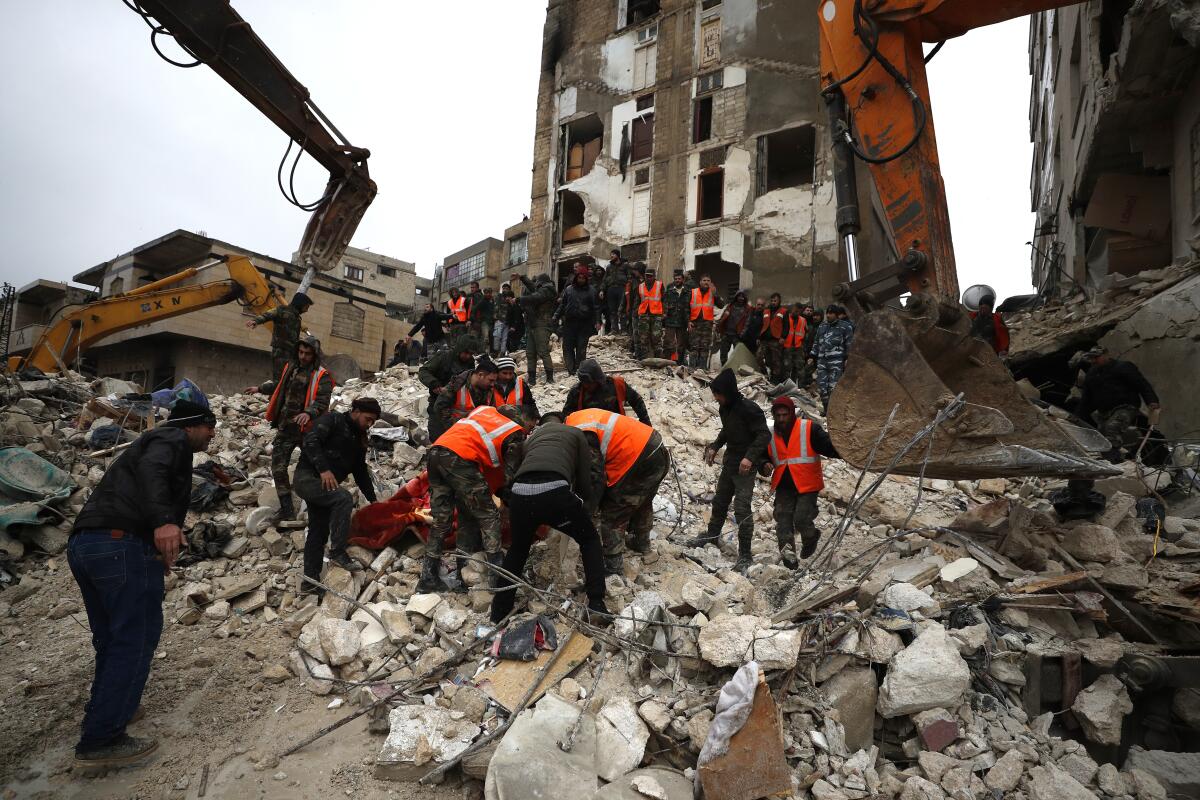
In the small Syrian rebel-held town of Azmarin in the mountains by the Turkish border, the bodies of several dead children, wrapped in blankets, were brought to a hospital.
In the Turkish city of Kahramanmaras, rescuers pulled two children alive from the rubble, and one could be seen lying on a stretcher on the snowy ground. Turkish broadcaster CNN Turk said a woman was pulled out alive in Gaziantep after a rescue dog detected her.
In Adana, 20 or so people, some in emergency rescue jackets, used power saws atop the concrete mountain of a collapsed building to open up space for any survivors to climb out or be rescued.
“I don’t have the strength anymore,” one survivor could be heard calling out from beneath the rubble of another building in Adana as rescue workers tried to reach him, resident Muhammet Fatih Yavuz said.
Breaking News
Get breaking news, investigations, analysis and more signature journalism from the Los Angeles Times in your inbox.
You may occasionally receive promotional content from the Los Angeles Times.
In Diyarbakir, hundreds of rescue workers and civilians formed lines across a huge mound of wreckage, passing down broken concrete pieces and household belongings as they searched for trapped survivors.
Huseyin Yayman, a legislator from Turkey’s Hatay province, said several of his family members were stuck under the rubble of their collapsed homes.
“There are so many other people who are also trapped,” he told HaberTurk television by phone. “There are so many buildings that have been damaged. People are on the streets. It’s raining, it’s winter.”
Alsayed reported from Azmarin, Syria, while Fraser reported from Ankara, Turkey. Associated Press writers Zeynep Bilginsoy in Istanbul, Bassem Mroue and Kareem Chehayeb in Beirut, and Kim Tong-hyung in Seoul, South Korea, contributed to this report.
Earthquakes can drop in at the worst possible time. Jacqui and Shane McIntosh were about to sell their home when it was shattered by a 6.4 quake.
More to Read
Sign up for Essential California
The most important California stories and recommendations in your inbox every morning.
You may occasionally receive promotional content from the Los Angeles Times.
